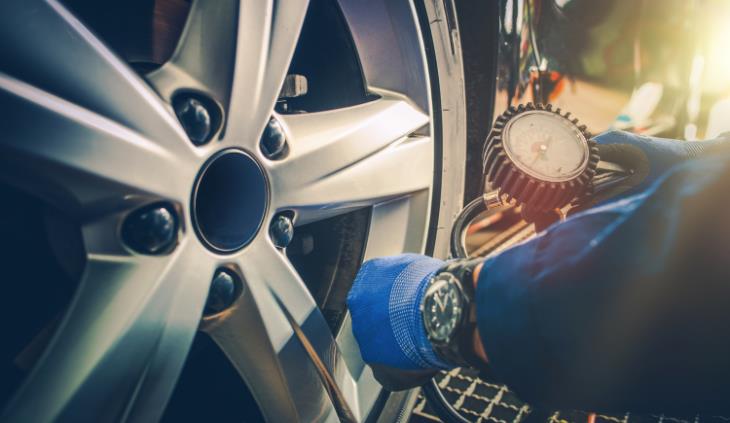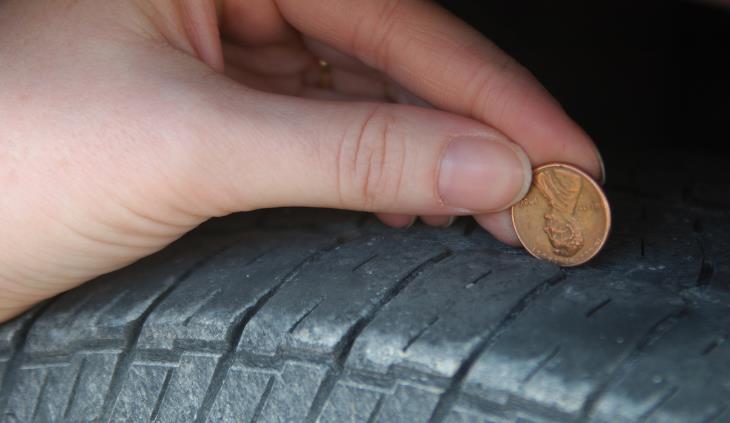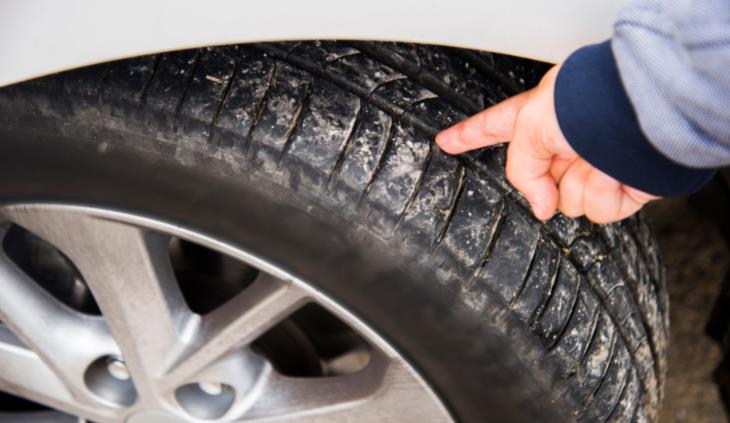

As the temperatures start to drop, you may see more and more of your tire pressure light. “For every 10°F drop in temperature, tire pressure decreases 1-2 PSI,“ according to Rich White, executive Director of the car care council. That is because, for most materials, the cold causes shrinkage while heat causes expansion, essentially reducing the air pressure in your tires.
PSI stands for pounds per square inch, indicating the distribution of air inside your tires. That is the official unit of measurement for air pressure.
The system that monitors the air pressure inside your tires is called a TPMS (tire pressure monitoring system). It came about after the Ford-Firestone tire scandal, in which low tire pressure in Ford Explorers caused them to roll over. In the aftermath of this event, the National Highway Transportation Safety Administration declared a TPMS mandatory in all new cars, starting in 2008.
Related: Drive Safely This Winter

Apart from a gradual increase in fuel consumption and CO2 emissions, under-inflated tires will also wear out much faster than a properly insulated tire. In winter and fall, the risks for an accident become greater as under-inflated tires can lose grip on the road.
The problem is, these systems are not always accurate and can be off by as much as 2 PSI. Here we list some troubleshooting tips for a potentially faulty TPMS system:
⁃ The light won’t turn off immediately as you fill up your tires. It should, however, turn off after a 10-mile drive. If it doesn’t turn off, go to the mechanic to have it recalibrated or do it yourself. Instructions should be in your car user manual.
⁃ Your air pressure light may turn off come noon, as the temperatures rise and the air in your tires expands.
⁃ You can over-inflate your tires by no more than three PSI if the air pressure light persists.
⁃ You can find the ideal tire pressure for your car on the sticker inside the driver's door. If there is no sticker, this information should be found in your car user manual.
⁃ In any case, inflate your tires once a month.

The tire tread has several functions. The main one is to enable your car to have a proper grip on the road. If the tread is worn down, the grip is not optimal and the risk of accidents goes up. To test the tread of your tires, you don’t need fancy equipment – you can use a quarter. Here’s how:
Find the area on your tire with the lowest tread. Insert the quarter headfirst into the tire tread. If you can see all of Washington’s head, it’s time to replace your tires. You can do the same test with a penny. If the penny meets the tire on Lincoln's hairline, replace your tire soon.

The treads on your tires direct water away from your tires to allow optimal grip even during rainfall. Virginia Tire & Auto explains it very well:
"Water cannot be compressed, so a vehicle needs enough tread depth to allow rain to escape through the tire’s grooves. Tires have channels for water to flow through; channels are designed to direct water away from the tire so it can remain in contact with the road. The deeper the channel, the more water can move. Tires that are worn down have shallower channels resulting in a dramatic effect on the vehicle’s ability to stop on wet roads." (Source)
Related: Defrost Your Windscreen in Seconds With These Methods
Proper tread depth also plays a major role in translating braking power into stopping power by creating optimal traction.
Apart from the usual monthly tire inflation, there are other treatments needed to keep your tires in good shape for as long as possible. Every 15,000 miles you should have your wheels balanced. Once a year, check the alignment of your wheels and the spare tire too.